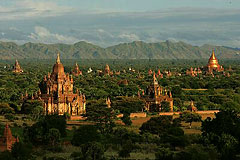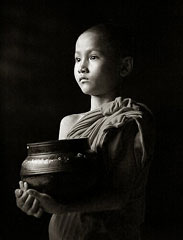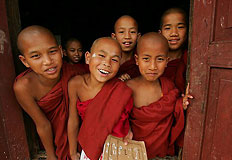
See our new Photo Tours & Workshops Website Here!
 |
See our new Photo Tours & Workshops Website Here! |
Amazing Myanmar
|
Cost: $6675 includes 3 in-country flights, all ground transport , all 14 nights hotel accommodations, airport transfers, all breakfasts, lunches and dinners, boat rides, entrance-fees at tourist sites, and English-speaking local guides. The price is based on double occupancy. A single supplement of $875 applies. Trip Leader: Karl Grobl - The trip will be limited to 10 participants |
|
 |
 |
Yangon, or Rangoon as it was once called, is the largest city in Burma and contains the amazing Shwedagon Pagoda. The origin of the Shwedagon Pagoda dates back over 2500 years. Gautama Buddha presented eight strands of sacred hairs to two merchants, who offered it to King Okkalapa on their return. The king built a pagoda on a hilltop overlooking the port city of Okkalapa, in which the sacred hairs were enshrined. Successive monarchs enlarged the pagoda by building outer structures over the original. The present stupa reaching a height of 326 feet was completed in the mid 1450s by Queeen Shin-Sawpu. The last renovation of the Shwehtidaw (literally meaning the "Golden Umbrella" and comprising the Diamond Bud, the vane and the shaft) was successfuly undertaken by King Mindon in 1871. Mandalay is the modern center of Buddhism and Myanmar arts, but was once the old royal city. Mandalay, 670 km north of Yangon, is now the home of traditional artisans - including wood and stone carvers, silversmiths, weavers and those producing gold leaf. The former capitol, prior to British rule, and second largest city in the country, Mandalay takes its name from the nearby 240-meter Mandalay Hill, and is rich in monasteries and pagodas.a |
| Bagan is one of the richest archaeological sites in Asia, it is located on the eastern bank of the Ayeyarwaddy River. Once the capitol of the Myanmar Empire, Bagan covers an area of 42 sq. km containing over 2000 well-preserved pagodas and temples of the 11th - 13th century. At its height, in the early 11th century, Bagan was the world center of Therevada Buddhism, with more than 13,000 pagodas covering the plains bordered by two sides of the Ayeyarwady River. But the city fell to the invasion of Kublai Kahn's hordes in 1287 and was abandoned, leaving to this day thousands of pagodas remaining in the midst of the Mongol destruction. At 875 meters above sea level, Inle Lake is surrounded by high hills that help to keep the waters calm and lake area misty. The huge and beautiful lake not only contains a marvelous microcosm of aquatic life and activity, but is also home to a hormonious blend of national races, including the Bamar, Danaw, Danu, Intha, Kayah, Pa-O, Shan, and Taung-Yo peoples. Inle Lake also supports a thriving farming community that produces a wide range of vegetables and flowers. Rice is cultivated at the northern end of the lake on extremely fertile, man-made floating islands. The local men also produce silver and brassware, pottery and lacquerware, while the lake's women are highly skilled weavers. |
 |
"Please note: Just like last year, we are running this trip on what I will call the "shoulder season", meaning that it preceeds the height of the tourist season. By doing this, we avoid the crowds, however, we might encounter fome brief rain showers. During last year's trip (2008) it rained on us about 3 or 4 times, mostly in short bursts lasting less than 1 hour each. Each brief downpour was followed by clearing clouds and "glossy" streets, resulting in images of color saturated fruits and vegetables in the market places and wonderful white, billowing clouds in our landscape shots.Whenever it started rainging, the few tourists who were at the sights with us vanished, leaving us with unprecedented "private" photo opportunities." - Karl Grobl
|
To view some of Karl's images of Myanmar click here To see Karl's video slide show of the 2008 tour click here |
|
Itinerary . . . . Day
one (Sep 6):
Day
Three:
Day
Four:
.
. Day
Seven:
come to buy, sell and exchange all types of goods, including fish, produce, farm implements and handicrafts. In addition to all the lakeside market activities we photograph, we will also visit such sites as the Jumping Cats (Nga Phe Kyaung) monastery, and a traditional silk factory where old weaving looms are used. In the evening return to Shwe Inn Tha Floating Resort for dinner.
|
|
To reserve a space on this tour click here Register online on our new website here
Tours and Dates / Testimonials / Terms & Conditions / About the Tours /Contact |